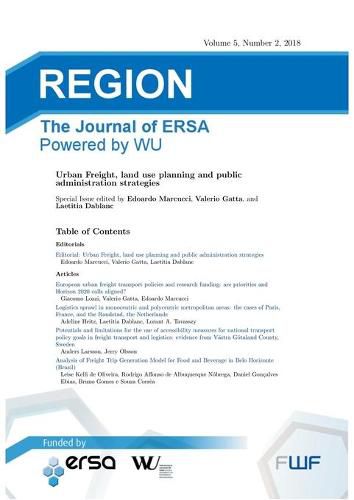Readings Newsletter
Become a Readings Member to make your shopping experience even easier.
Sign in or sign up for free!
You’re not far away from qualifying for FREE standard shipping within Australia
You’ve qualified for FREE standard shipping within Australia
The cart is loading…






This title is printed to order. This book may have been self-published. If so, we cannot guarantee the quality of the content. In the main most books will have gone through the editing process however some may not. We therefore suggest that you be aware of this before ordering this book. If in doubt check either the author or publisher’s details as we are unable to accept any returns unless they are faulty. Please contact us if you have any questions.
Cities are the engines of an innovation-based economy where research and new ideas are the core input of production. Urbanisation is becoming synonymous of economic growth. People flock into cities, both in the developed and developing world, since here is where wealth is, where high quality services are available and life standards are comparatively higher with respect to other places. However, one has to acknowledge that growth also produces undesired negative effects. In fact, cities are net importers. They need to acquire consumption/intermediate goods, export production and get rid of waste. In other words, the existence of a city relies on a transportation system providing the necessary services for its functioning. The typical urban transportation system heavily depends on passenger and freight movements by road. While this dependency is, in some cases, less relevant for passenger transport, most of freight moved in, out, within and through a city relies on motorized road transportation. Trucks and vans are responsible for congestion, polluting emissions, accidents, noise, visual intrusion and stench. All these negative effects are concentrated where many citizens live and, consequently, produce relevant economic (e.g. time lost), environmental (e.g. air quality), and social (e.g. segregation) impacts. Cities to be attractive, sustainable and thriving need an efficient freight transportation system. Fast changing consumption patterns with the rise of e-commerce and home deliveries also point out to another dimension of cities: their need to adapt quickly to economic trends.
$9.00 standard shipping within Australia
FREE standard shipping within Australia for orders over $100.00
Express & International shipping calculated at checkout
This title is printed to order. This book may have been self-published. If so, we cannot guarantee the quality of the content. In the main most books will have gone through the editing process however some may not. We therefore suggest that you be aware of this before ordering this book. If in doubt check either the author or publisher’s details as we are unable to accept any returns unless they are faulty. Please contact us if you have any questions.
Cities are the engines of an innovation-based economy where research and new ideas are the core input of production. Urbanisation is becoming synonymous of economic growth. People flock into cities, both in the developed and developing world, since here is where wealth is, where high quality services are available and life standards are comparatively higher with respect to other places. However, one has to acknowledge that growth also produces undesired negative effects. In fact, cities are net importers. They need to acquire consumption/intermediate goods, export production and get rid of waste. In other words, the existence of a city relies on a transportation system providing the necessary services for its functioning. The typical urban transportation system heavily depends on passenger and freight movements by road. While this dependency is, in some cases, less relevant for passenger transport, most of freight moved in, out, within and through a city relies on motorized road transportation. Trucks and vans are responsible for congestion, polluting emissions, accidents, noise, visual intrusion and stench. All these negative effects are concentrated where many citizens live and, consequently, produce relevant economic (e.g. time lost), environmental (e.g. air quality), and social (e.g. segregation) impacts. Cities to be attractive, sustainable and thriving need an efficient freight transportation system. Fast changing consumption patterns with the rise of e-commerce and home deliveries also point out to another dimension of cities: their need to adapt quickly to economic trends.